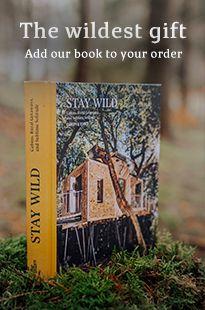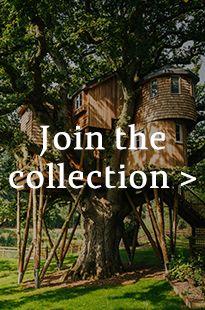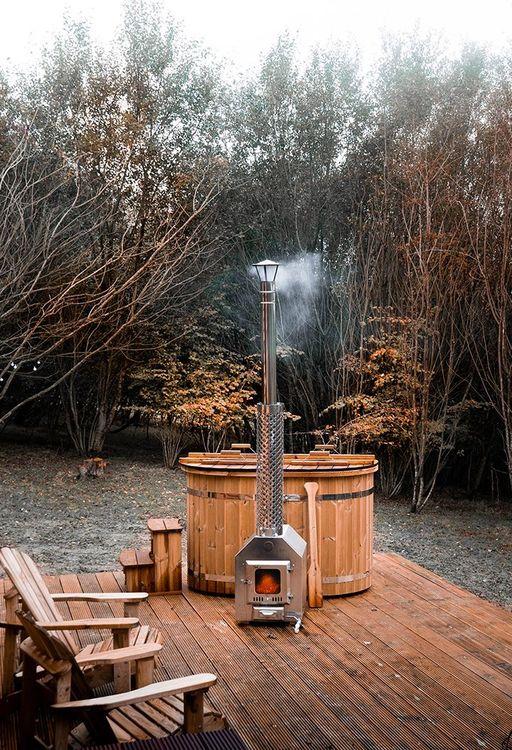
Can hot tubs be sustainable?
It’s right in there in the name – hot. No matter what you do, heating something will require energy, and therefore, create emissions. As a company that cares about and promotes sustainability, hot tubs are a contentious issue. The flipside to consider of course, is that many opt for lower emission staycations over flying abroad, because of the luxury experiences like hot tubs, hot tub holidays remains the most popular collection on our website. In order to ensure those emissions are as low as possible, we’ve compiled some pros and cons to different systems, fuels and so on, as well as some tips and tricks to help you reduce your environmental footprint.
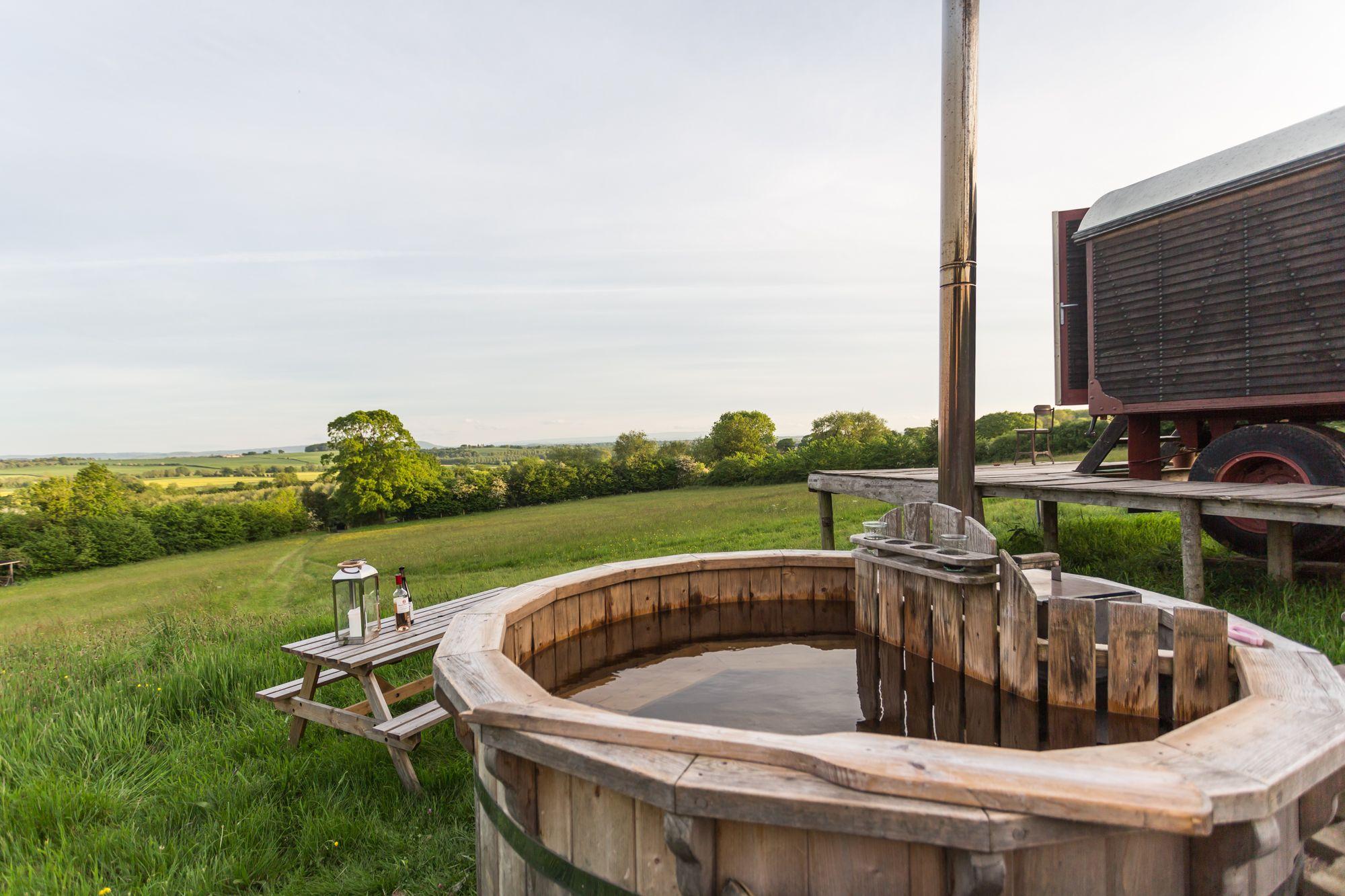
Wood fired hot tubs: Heating
Pros
- A great option if you are off grid without access to electricity.
- They inspire the slow-life, getting guests to light the fire and wait for it to warm up is all part of the experience -- it connects guests to how we use energy, rather than just flicking a switch.
- Wood fired hot tubs avoid the excessive consumption of electricity required to run the jets, heating elements and lights on a typical electric hot tub.
- If the fuel wood comes from your site, its carbon footprint for production and transport will be close to zero (zero itself if you carried it). If you have woodland, part of its upkeep will mean thinning out the number of trees, which in turn gives you a fuel source as well as a disposal service!
Cons
- If you're unable to source wood direct from your site, the impact of production and transportation can be high. As can be the cost and the ethics of where the wood is being sourced from can be questionable.
- There are concerns around the pollution emitted from burning wood, and whilst they are very real concerns, they're typically more of a worry in densely populated areas where they'd be contributing to air quality along with other high carbon emissions. Fortunately, in most cases our owners are using it as an off-grid source of heating, using well-seasoned timber from their own woodland; this reduces the pollution caused by production and transport.
Tips
- It's essential the wood is well seasoned (at least 1 year for softwood and 3 years for hard wood) to ensure that it burns efficiently and cleanly -- as guests will use less wood if it burns efficiently.
- If you're unable to source wood from your site, then look for local sustainable suppliers or directly connect with an estate or landowner that you can source it from. This will not only support a local business, but will also mean a lower carbon footprint from less transportation. Purchasing lots of individual bags of wood which are shipped in from overseas or come wrapped in plastic, is far less sustainable. Just make sure, as mentioned, it's seasoned well!
- There are advances in biofuels every day, and there are a number of options available such as coffee logs. As with any alternative fuels, or 'green' options, it's always worth doing your own research to ensure it's up to your standards of sustainability.
- When purchasing your tub, ask the supplier about how long it will take to heat. Some stoves are more efficient than others and this will impact the amount of wood needed per use.
- Ensure you're informing guests how much wood is actually needed using to heat the hot tub up to a lovely warm temperature and that there's an easy to read temperature gauge for them to check. Also, make sure they know how to use the insulated covers correctly, to store heat in between hopping in and out in the same evening. Many tubs are well designed, and highly efficient, and these steps will ensure they're not burning wood when they don't need to be.
Wood fired hot tubs: Water
Tips
- Consider the ways you could use the drained wastewater from the tub around your site. As wood fired tubs don't require chemicals, they can be safely emptied and reused. Could you store it and use it to water plants? Or maybe to flush toilets?? Can you set up reed beds onsite to handle greywater?
- Consider the amount of water being used, if your spaces are for couples only -- choose a smaller tub, as it requires much less water, and less time to heat up. You could also consider using an outdoor bathtub instead.
- In an ideal scenario you'd be able to access water from your own borehole, or water course onsite. If, however, you're in an area with restricted or limited access to water -- then a hot tub might not be the right choice for you.
Wood fired hot tubs: Creation, upkeep and disposal
- As with any purchase, the materials the hot tub are made from are a vital consideration. Do they have a long lifespan for usage? Hot tubs made exclusively from wood can deteriorate quicker from constant use, as well as presenting more of a challenge to clean. Naked Flame currently have plastic fitted liners for their tubs which are very robust, and make cleaning much easier, as well as being fully recyclable.
- Sourcing is also important, where the hot tubs have been transported from will determine the carbon footprint of the shipping, so shipping from a UK company would seriously reduce that footprint.
- Don't be afraid to ask questions to hot tub suppliers to hold them accountable for offering products that are ethically and sustainably made. The more they see requests from potential purchasers, the more likely improvements will be made in the future.
- Whilst no chemicals are required to run a wood fired hot tub, we still recommend following hygiene guidelines by governing bodies, such as BISHTA. It's good practise to empty the water between guests, and cleaning the tub with eco-friendly products that can be disposed of with greywater.
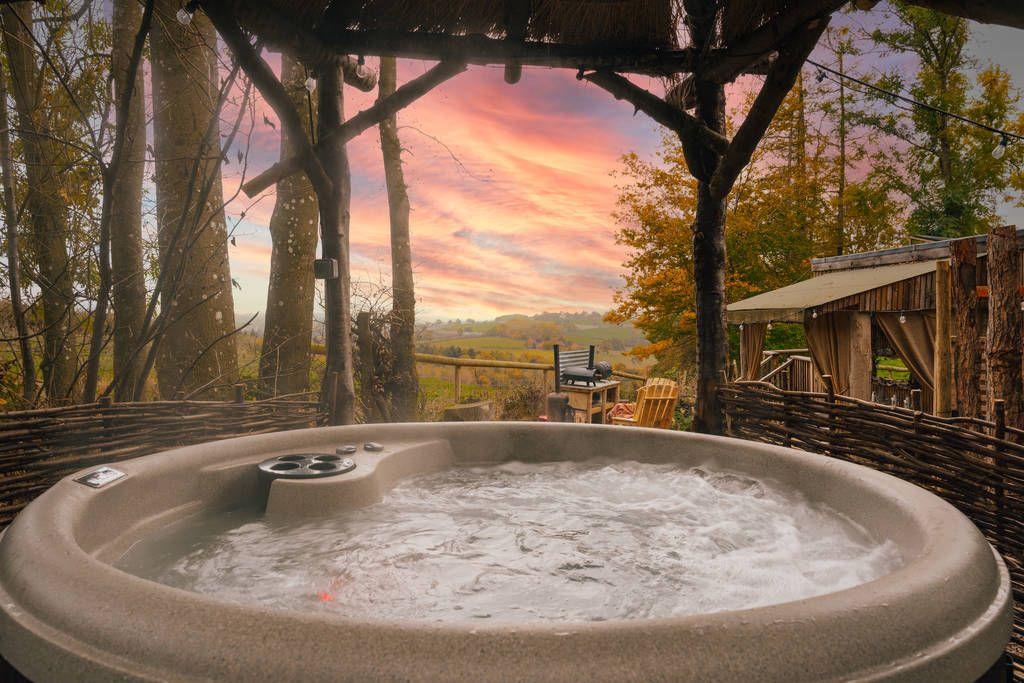
Electric hot tubs: Heating
Pros
- Electric hot tubs, if run using 100% renewable energy can provide a better alternative for those without local access to wood. Rufus Roost swears by using their electric hot tub, and use an air source heat pump, as well as using Octopus as their green energy provider.
- They are lower maintenance in terms and easier for guests to get going.They can work for group spaces quite well, for instance.
Cons
- We've long argued that wood fired hot tubs are best in terms of experience, slowing guests down, connecting them to the task of lighting a fire. However as the world switches to renewable energy, electric hot tubs have their place for some owners.
- Unless switched off, electric hot tubs will just keep running using lots of energy. Make sure your guests know to turn it off when not in use.
Tips
- If you're on a 100% renewable tariff, or if you have access to your own on-site renewable energy, you may consider going electric instead.
- Avoid the plastic, neon lights and chemical tubs you see in in traditional holiday lets -- it can diminish the experience and the quality of your space.
- Why not create your own handmade tub! Yvette at Humble Bee made her own tub out of polished concrete
- As with wood fired, if your space is just for couples, you can consider a smaller tub for your space.
- As aforementioned, avoid the chemical tubs completely, as they're bad for the environment. They're also more maintenance for yourself, as they require chlorine, bromine and PH testing at least twice a day.
- If you are using electric, microbiological testing should be carried out on a monthly basis for each hot tub and quarterly for the presence of legionella.
- As with wood fired, it's worth checking out the BISHTA website for specific advise and guidelines, as they are the industry experts.



